Text by Mila Azimonti
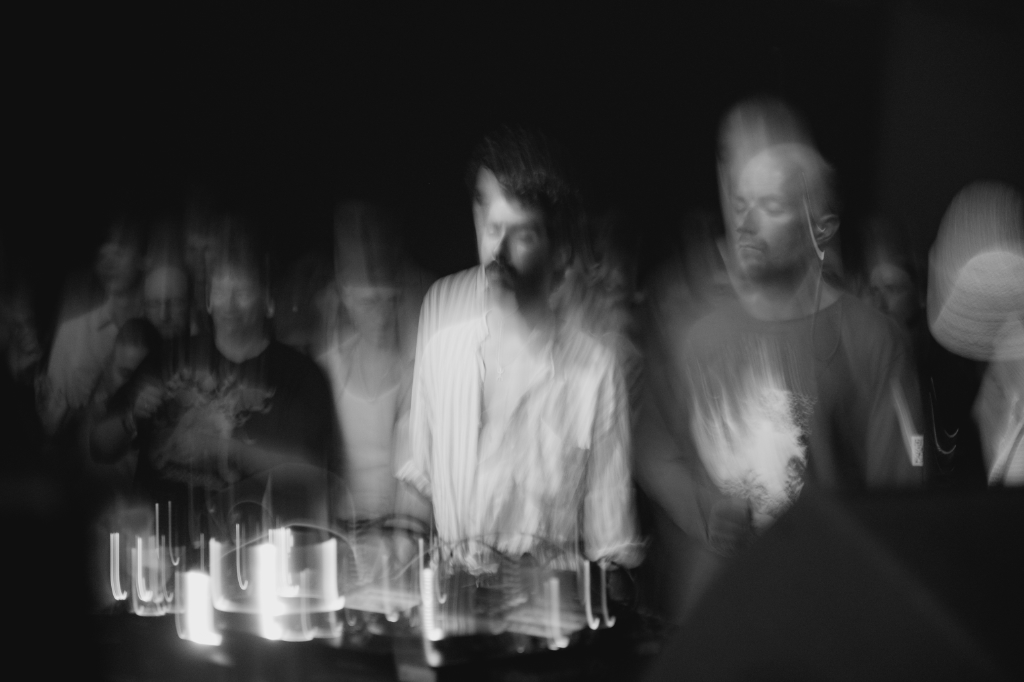
Who knew Belgium had a little German corner tucked away? I didn’t—until Meakusma brought me to Eupen. Pronounced “Oypen” (for us English speakers), this small town is the capital of Belgium’s German-speaking Community, home to less than 1% of the country’s population. With its 20,000 residents, at first glance Eupen might come off as a drowsy, conservative border town with a kind of bourgeois feel and a noticeable gap in the younger generation.
But don’t be misled—its position, near the German frontier and just a few hours’ drive from the Netherlands and Luxembourg, gives it a quirky international flair. And it’s not just geography making it a cultural crossroand. After the fall of the Holy Roman Empire, the town swapped hands between France, Prussia (later part of the German Empire), and, after World War I, Belgium. So I guess it’s safe to say Eupeners are well-versed in navigating fluid identities.
This cultural permeability makes Eupen the perfect home for Meakusma, a festival as borderless in its musical vision as the town’s past and location. Meakusma is an open-minded, genre-fluid, four-day playground of musical extravaganza. Blending experimental gigs, a daytime outdoor dub system, and tutti-frutti DJ sets that carry on into the early hours, the festival attracts those seeking wondersound from across neighbouring countries. You might stumble upon chance meetings with reel-to-reel tape performances, motorik-infused dub requiems, suspiciously clumsy theatrical improvisations, kinetic audio sculptures, sophisticated Balearic and mutant disco DJ sets, lavish ambient soundscapes, world-building sonic immersions, and mysterious pop abstractions laced with absurdist touches. If that sounds too abstract or weird, then Meakusma might not be your jam.
My two friends, Jade and Blake, and I arrived in Eupen on Thursday afternoon after a delayed Eurostar that left King’s Cross at 7 AM. It’s a mild, cloudy day, and the mood is a mix of excitement and silliness––partly due to accumulated fatigue from the early wake-up and the tail end of a particularly intense festival season. (Over)loaded with camping gear, we head to the campsite, run by the local boy scouts. Predictably, it’s a military-like setup: a dozen neatly sectioned plots divided by crime scene tape, scrupulously stretched across the grass. Being used to the chaotic sprawl of UK festivals, the contrast is striking. We’re among the first to arrive (and likely the last to leave), so we have our pick of spots. No trees for shade, but the weather is perfect, and the forecast looks promising—a gradual temperature rise that’s set to hit 30 degrees by Sunday.
Guiding us through the festival site is a trusty booklet. If you’re lucky (or distracted) enough, you might end up with someone else’s copy—often filled with hearts and notes next to must-see performances. It’s an amusing, unintentional peek into the minds of strangers that creates room for delightful accidents. While the festival unfolds across the city—baroque churches, theatre halls, art galleries, and shipping containers converted into community radio hubs—much of the action happens at the gorgeous Alter Schlachthof. This early 20th-century industrial gem, all brick and character, was once a municipal slaughterhouse until it got shut down in 1991 for, well, failing to meet hygiene standards. Inside the main hall, you can still spot traces of its gritty past: a minimalist fresco made from reused tiles and, overhead, the old tracks where animal carcasses once hung—now seamlessly repurposed to conceal LED lighting.

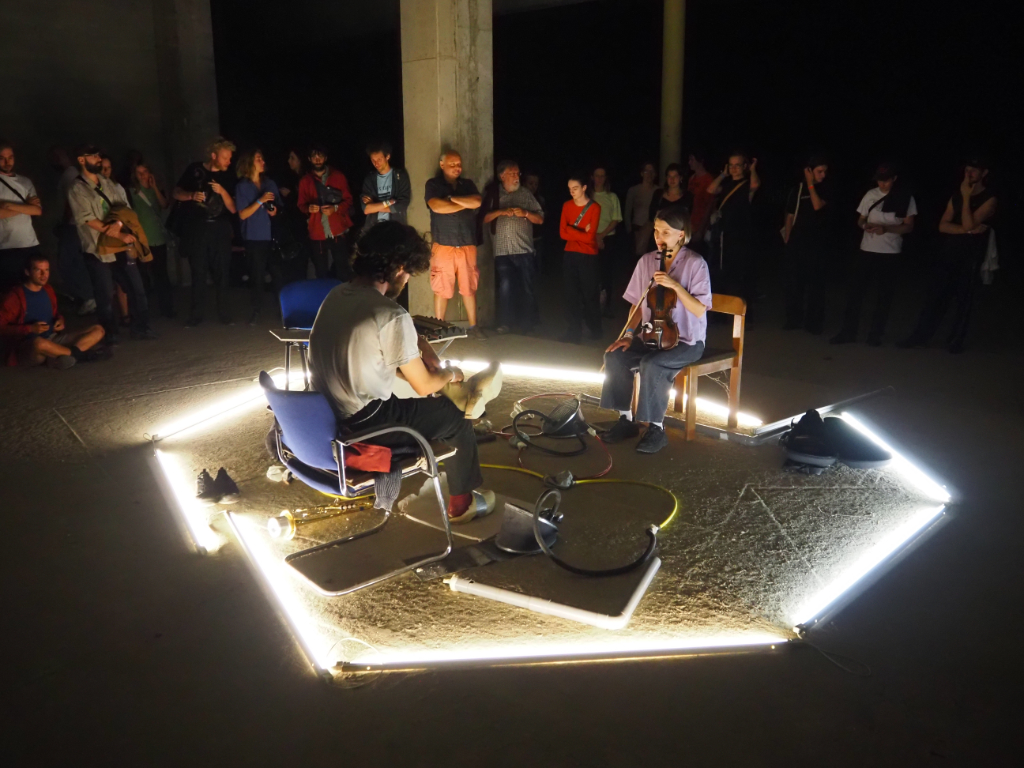
Separating the campsite from this slaughterhouse-turned-cultural-haven is a patchwork of allotments, mostly hidden behind towering sunflowers. Up front, right next to the former barn, sits a laid-back food court with some surprisingly sophisticated, though not exactly vegan- or gluten-free-friendly, food stands. Before stepping into the main building, we pass through a liminal zone: a sheltered, well-worn sofa corner––the perfect physical and emotional soft landing after a wearing performance, though it might just trap you there, making you miss the next one. For now, it’s empty, but it won’t be long before it’s packed with sprawled out bodies piled on top of each other, beers and cigarettes in hand, soaking up the energy like those sunflowers to the sun.
When it comes to curation, Meakusma is unapologetically alternative. This year’s lineup, in particular, feels like a departure from the predictable directions most experimental music festivals are treading. I’ve heard it called “a mini-Unsound”, but judging by the choices this time around, it seems like Meakusma took a sharp left turn, opting for something far less obvious. Hardly any big-name headliners, and even those don’t feel like the overexposed acts you see on every other lineup. The familiar names are mostly rooted in the underground, with very little that feels overdone or blasé. It’s clear the curators have gone through a process of rethinking their approach, deliberately avoiding the usual suspects to make room for adventurous innovation in sound and scene.
With 140 acts spread over four days for a crowd of about 1200 people, it’s an intimate affair. And it’s precisely the tight-knit, informal atmosphere and the sense that everyone’s in it together, that makes Meakusma so special. You’ll see artists wandering around, mingling with the crowd, which gives the whole festival a democratic, egalitarian feel. In fact, Meakusma feels more like a gathering of friends than just another festival. The capacity hasn’t grown in years, and that’s by design—the curators want to keep it small, personal, and community-driven. It’s got an equal parts avant-garde and DIY charm, and despite the brain-melter token system (frustrating by default), you can tell this isn’t a money-driven festival.
One thing’s for sure: there’s a unique openness and diversity at Meakusma that’s hard to pin down. Don’t expect a neat, overarching theme. There’s no grand narrative tying this edition together–or any of the previous ones, for that matter. Despite its exceptional quality, I have to admit that the lack of a clear curatorial thread felt a bit of a letdown at first. No research topic, no cohesive aesthetic, no panel discussions to fuel deeper conversations.
Sure, there were immersive walks, installations, and, to be fair, a series of interviews conducted in the framework of the Meakusma Magazine, but without context program, I left feeling like I hadn’t fully unlocked Meakusma. One question kept circling in my mind throughout the four days: what keeps it from feeling like just a string of wondrous gigs? Is the festival simply a great showcase of experimental music, or is it actually moving the needle for the ““““genre””””? After all, shouldn’t that be the ultimate goal for an experimental festival that seeks to realize its full potential? I’ll come back to this later.
Talking about highlights at Meakusma almost feels like a lost cause. “You’d need four bodies to catch everything,” my friend Joe says, trying to console me as I lament missing out on Otto Wilberg. Honestly, sometimes even eight wouldn’t cut it. My original plan? Thrown out the window. But that’s part of the wizardry––it’s less about the schedule and more about the mood shift. Float between venues, support friends (and friends of friends), stretch out on the grass, or sink deep into one of those dangerous couches. Be silly. Surrender to the chaos. Here are a few of the gems I stumbled upon.
The festival opens in a serene setting: a small, hilly park facing Studio Néau at sunset. The crowd relaxes on the late-summer grass. Off to the side, a striking mix of bells, singing bowls, gongs, and other types of Gamelan instruments lay in wait, with a drum kit ready for lead percussionist Will Guthrie. The eight other musicians who, together with Guthrie, compose the Ensemble Nist-Nah, are sitting shoeless, waiting to dive into timbral and rhythmic exploration. The performance begins with a slow shuffle, the musicians conjuring a fragmented, layered soundscape that feels at once ancient and whimsical. Gongs swell into waves of low-frequency hums, while erring bells and metallophones twist rapid, glinting polyrhythms.
The music slips between meditative spaces and sudden bursts of frenetic energy, driven by a manic drumming that hourls the ensemble into anarchic, interlocking rhythms. Strangely hypnotic, it’s a music that exudes a raw physicality. A blend of Indonesian traditional musics, avant-jazz and experimental noise that creates moments of fractured unity. Ensemble Nist-Nah plays to a polite but slightly stiff crowd, as Guthrie wryly remarks. Not for lack of appreciation though––everyone’s still-warming-up.
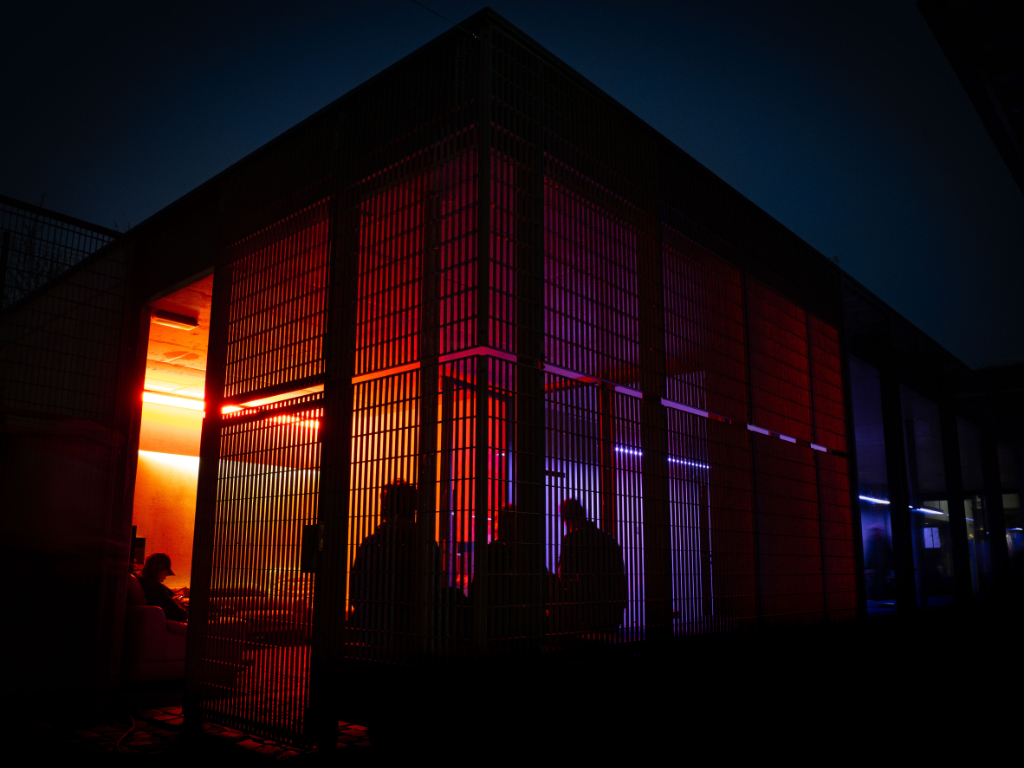
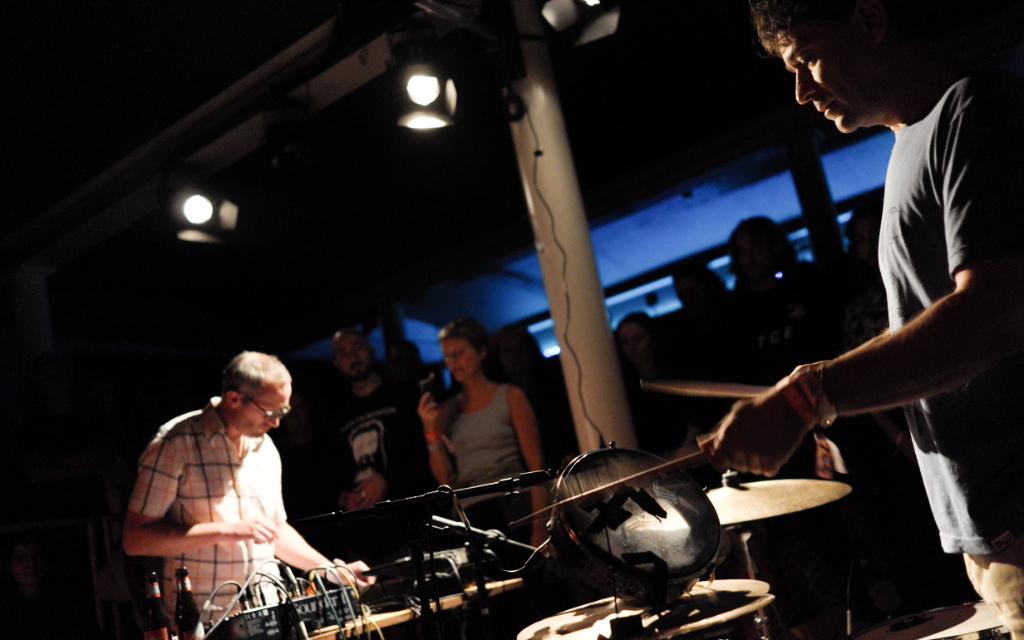
Separating the campsite from this slaughterhouse-turned-cultural-haven is a patchwork of allotments, mostly hidden behind towering sunflowers. Up front, right next to the former barn, sits a laid-back food court with some surprisingly sophisticated, though not exactly vegan- or gluten-free-friendly, food stands. Before stepping into the main building, we pass through a liminal zone: a sheltered, well-worn sofa corner––the perfect physical and emotional soft landing after a wearing performance, though it might just trap you there, making you miss the next one. For now, it’s empty, but it won’t be long before it’s packed with sprawled out bodies piled on top of each other, beers and cigarettes in hand, soaking up the energy like those sunflowers to the sun.
When it comes to curation, Meakusma is unapologetically alternative. This year’s lineup, in particular, feels like a departure from the predictable directions most experimental music festivals are treading. I’ve heard it called “a mini-Unsound”, but judging by the choices this time around, it seems like Meakusma took a sharp left turn, opting for something far less obvious. Hardly any big-name headliners, and even those don’t feel like the overexposed acts you see on every other lineup. The familiar names are mostly rooted in the underground, with very little that feels overdone or blasé. It’s clear the curators have gone through a process of rethinking their approach, deliberately avoiding the usual suspects to make room for adventurous innovation in sound and scene.
With 140 acts spread over four days for a crowd of about 1200 people, it’s an intimate affair. And it’s precisely the tight-knit, informal atmosphere and the sense that everyone’s in it together, that makes Meakusma so special. You’ll see artists wandering around, mingling with the crowd, which gives the whole festival a democratic, egalitarian feel. In fact, Meakusma feels more like a gathering of friends than just another festival. The capacity hasn’t grown in years, and that’s by design—the curators want to keep it small, personal, and community-driven. It’s got an equal parts avant-garde and DIY charm, and despite the brain-melter token system (frustrating by default), you can tell this isn’t a money-driven festival.
One thing’s for sure: there’s a unique openness and diversity at Meakusma that’s hard to pin down. Don’t expect a neat, overarching theme. There’s no grand narrative tying this edition together–or any of the previous ones, for that matter. Despite its exceptional quality, I have to admit that the lack of a clear curatorial thread felt a bit of a letdown at first. No research topic, no cohesive aesthetic, no panel discussions to fuel deeper conversations. Sure, there were immersive walks, installations, and, to be fair, a series of interviews conducted in the framework of the Meakusma Magazine, but without context program, I left feeling like I hadn’t fully unlocked Meakusma. One question kept circling in my mind throughout the four days: what keeps it from feeling like just a string of wondrous gigs? Is the festival simply a great showcase of experimental music, or is it actually moving the needle for the ““““genre””””? After all, shouldn’t that be the ultimate goal for an experimental festival that seeks to realize its full potential? I’ll come back to this later.
Talking about highlights at Meakusma almost feels like a lost cause. “You’d need four bodies to catch everything,” my friend Joe says, trying to console me as I lament missing out on Otto Wilberg. Honestly, sometimes even eight wouldn’t cut it. My original plan? Thrown out the window. But that’s part of the wizardry––it’s less about the schedule and more about the mood shift. Float between venues, support friends (and friends of friends), stretch out on the grass, or sink deep into one of those dangerous couches. Be silly. Surrender to the chaos. Here are a few of the gems I stumbled upon.
The festival opens in a serene setting: a small, hilly park facing Studio Néau at sunset. The crowd relaxes on the late-summer grass. Off to the side, a striking mix of bells, singing bowls, gongs, and other types of Gamelan instruments lay in wait, with a drum kit ready for lead percussionist Will Guthrie. The eight other musicians who, together with Guthrie, compose the Ensemble Nist-Nah, are sitting shoeless, waiting to dive into timbral and rhythmic exploration. The performance begins with a slow shuffle, the musicians conjuring a fragmented, layered soundscape that feels at once ancient and whimsical. Gongs swell into waves of low-frequency hums, while erring bells and metallophones twist rapid, glinting polyrhythms.
The music slips between meditative spaces and sudden bursts of frenetic energy, driven by a manic drumming that hourls the ensemble into anarchic, interlocking rhythms. Strangely hypnotic, it’s a music that exudes a raw physicality. A blend of Indonesian traditional musics, avant-jazz and experimental noise that creates moments of fractured unity. Ensemble Nist-Nah plays to a polite but slightly stiff crowd, as Guthrie wryly remarks. Not for lack of appreciation though––everyone’s still-warming-up.
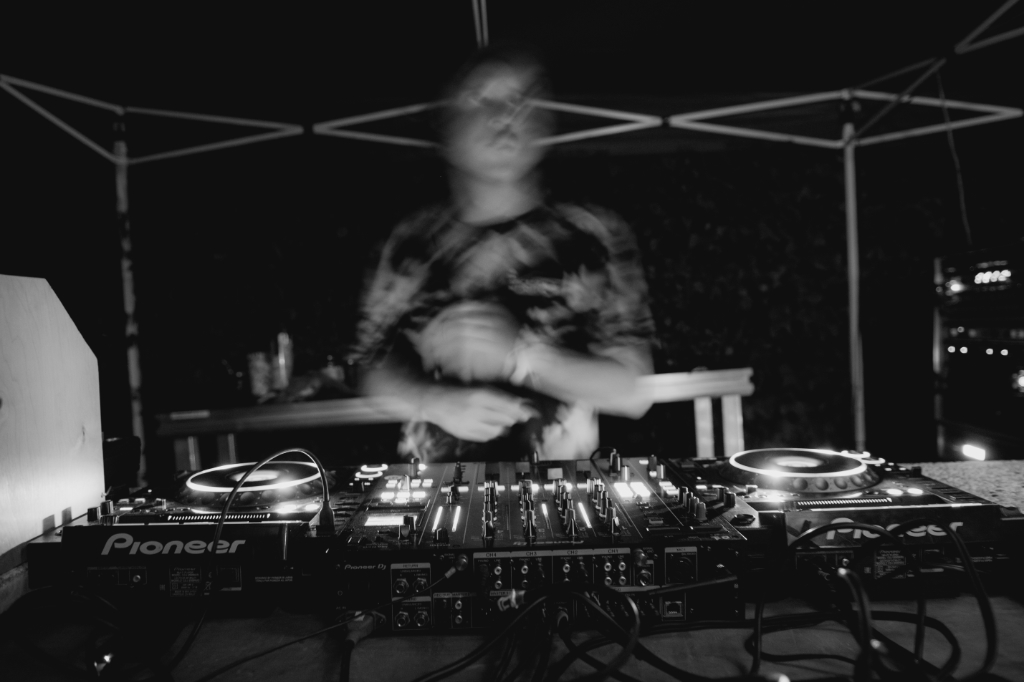
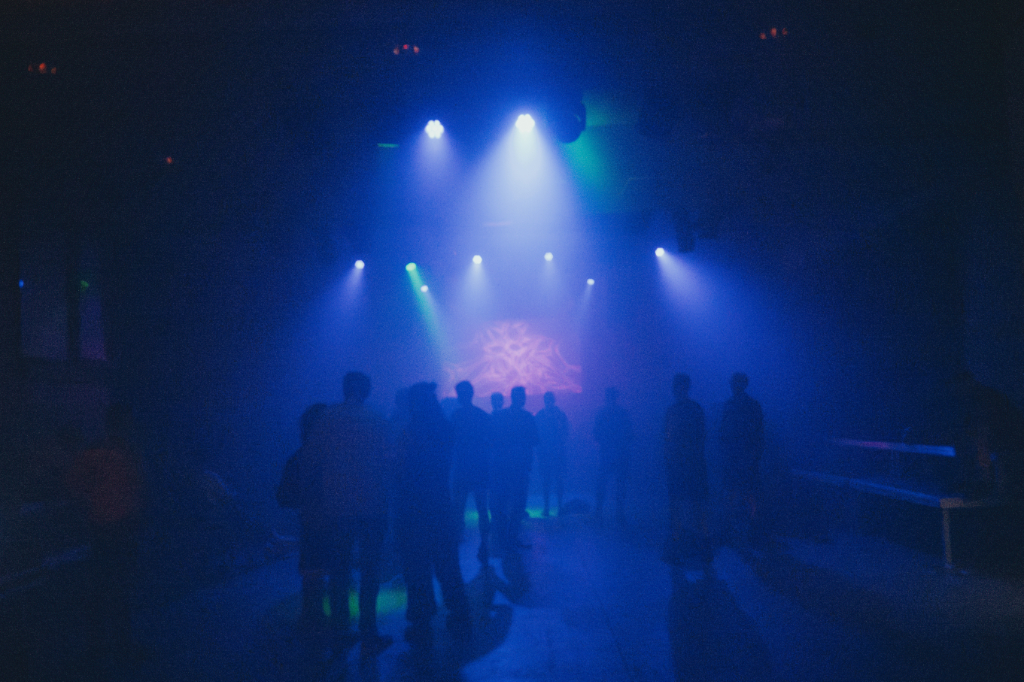
Looking to shake things up a bit, my friend Charly and I decide to check out John T. Gast and Solomon Garçon’s project, DO U WANT TO MOVE BACK TO LDN, mostly because the name is too good to resist––the booklet giving us only a cryptic “musical abstraction, beyond abstraction.” Like most of Gast’s work, the project is shrouded in mystery—minimal information online, self-releases only. We definitely made the right call: the performance shook things up in every possible way. As we step in, we are pummeled by a wall of harsh noise. Eerie, scattered sounds assault us from every direction—distant screams, air raid sirens, a crackling radio signal that never quite comes through, a snarling, panting dog.
All of this is underscored by seismic, gut-rattling low frequencies that massage your viscera. Sadly, we miss the cheeky opening, where distorted snippets from the noughties trash TV gem The Simple Life set the tone for just how seriously these guys take themselves (you can catch it all on their live album “Paris:Nicole”). It is only 5 PM, so the room is flooded with natural light spilling through the windows, with a thick veil of white smoke hanging in the air. Experiencing a power electronics set in broad daylight feels surreal––very different from the dark, strobe-heavy environments where they usually take place. For an hour, we are engulfed in an unnerving cinematic soundscape, the intensity of which is sublimely overwhelming. Pure impro madness, indeed.
My round of concerts wraps up on Sunday afternoon with Dennis Tyfus and Jeroen Stevens’ JEUGDBRAND. Both are notorious figures in Antwerp’s experimental scene––Stevens, a brilliant percussionist, and Tyfus, the creative force behind the infamous Ultra Eczema label. The curtain rises. Tyfus is alone at the piano, dramatically mourning the absence of his elusive bandmate, “Jeronimus,” which is nowhere to be found.
After several calls (which, of course, the audience is roped into), Stevens finally makes his entrance, looking thoroughly disoriented. But instead of rushing to his spot, he takes a leisurely detour, stopping to shake hands with a few equally puzzled members of the crowd. Bizarre phrases and sharp, absurdist remarks drift and intertwine. Tyfus breaks up sentences and vocalizations, prioritizing raw emotion over coherent narrative. Switching between English, French, and Flemish, his voice twists and turns in a chaotic, almost deranged fashion—oscillating between growls and moans, guided by his wry wit and anarchic sensibility. Stevens complements him with an uncanny array of percussive sounds to create a surprising emotional depth with minimal components. The result is an outlandish combination of avant-garde noise, humor and drama––feels like witnessing a tragicomedy performed in sound. While I spend much of the performance in fits of laughter (and still do, everytime I listen to their album Siamese Dream (Team)), the whole thing is permeated by an undercurrent of melancholy. This is what music sounds like when it’s completely free: baffling, eccentric, hilarious, urgent, silly, skillfully made, messy. It exists outside of genres, with a personality that’s unmistakably its own.
The final evening is mostly consumed between the cozy confines of the Heuboden stage (aka the Hayloft)––the crowd’s favorite spot. Tucked behind the old slaughterhouse in an independent building, the day’s light seeps in through panoramic windows that offer sweeping glimpses of the surrounding hills. Inside, DJs perform from a low booth, lounging on a couch, while Persian rugs and carpeted podiums morph into dance floors or chill-out spots. What makes Heuboden so special is the effortless way the energy flows. More than once, a DJ took a laid-back, seated crowd and turned it into a jumping one in an instant. It feels like the ultimate living room afterparty with an unbeatable soundtrack.
By 7 PM, the party is in full force. As the 54Kolativ Soundsystem outside powers down, music spills from the Heuboden’s windows—the only source of oxygen for the 100++ sweaty bodies crammed inside. We all know that once Nosedrip hits the decks, the space will be packed with a sultry energy and the heat will become nearly unbearable. The Flamingos’ line, “Baby, I can’t stand the heat,” rings out like prophecy, echoing through the haze of sound, as bodies twist and turn. The heat rises, but we endure. Bottles of water pass from hand to hand, and those trusty booklets become our salvation, fanning us like desperate wings in this sweltering twilight. And as the night stretches toward its inevitable end, we find ourselves in the closing grip of Phuong-Dan’s set. It is 2 AM. The world beyond these walls fades, as arms lift skyward, glasses of kombucha spritz raised like offerings. The final track, The Power of Love, swells around us, its refrain the last whisper of four timeless days. In this moment, there is no loss—only the fullness of what was, and what remains.
Every festival has its own personality—a mix of curation, crowd, setting, and a sense of purpose. I recently came across a description of Meakusma as “gentle mayhem,” and I can’t think of a better expression to sum it up. It’s a chaotic biotope, but in the best, most playful way.
Like I said, I left feeling like I hadn’t fully deciphered Meakusma’s idiosyncratic ecosystem. And yet, instead of frustration or confusion, I was left with a sweet, lingering sense of fulfillment. This brings me back to the question: what is the role of an experimental music festival? Maybe there’s no need to over-intellectualize it. Sometimes, taking an excessively analytical approach to music strips away the joy, the spontaneity, the fun. Maybe, serving as a playground for sound enthusiasts to blindly (yet safely) putting their trust into the unknown, experiencing a great overload of wondrous music, and having a damn good time is the real point of a festival like Meakusma. And maybe that’s enough. Yes—maybe that’s all Meakusma really needs to be.





